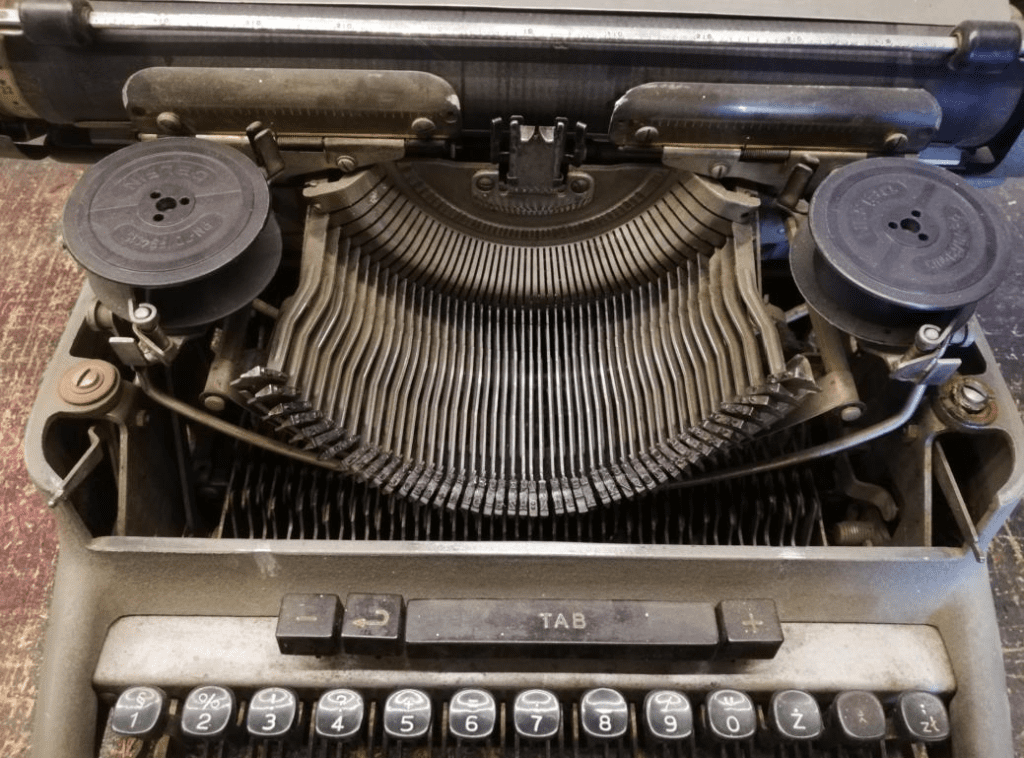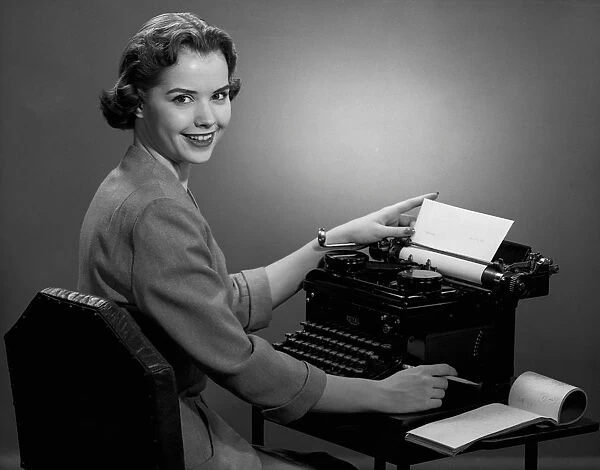The typewriter is more than just a machine; it’s a symbol of innovation, progress, and the evolution of written communication. Although its concept can be traced back to the 18th century, the typewriter didn’t gain commercial success until the release of the Sholes and Glidden typewriter, commonly known as the Remington No. 1, in 1873. This groundbreaking invention revolutionized writing, paving the way for the high-speed, standardized, and accessible communication methods we rely on today. Let’s explore the fascinating journey of the typewriter and the impact it continues to have on our modern world.
Early Beginnings: The Birth of the Typewriter

The mechanical writing machine that we now call the typewriter had humble beginnings. In the late 19th century, inventors experimented with different designs to create a machine that could replicate written text with mechanical precision. In 1873, the Sholes and Glidden typewriter became the first model to achieve commercial success, sparking interest in typewriting and leading to a surge of innovation in the field.
One of the most iconic features of early typewriters was the QWERTY keyboard layout, which remains the standard today. Created by Christopher Latham Sholes, this arrangement aimed to reduce jamming by spacing out commonly used letters. It was designed with the mechanics of the typewriter in mind, but it has since become an enduring fixture of keyboards everywhere, including on modern computers and smartphones.
The Typewriter’s Impact on Communication and Society
The introduction of the typewriter brought about a seismic shift in how people wrote and communicated. It didn’t just speed up the writing process; it also standardized and professionalized the art of documentation. Here are some of the key ways in which the typewriter made its mark on society:
1. Enhanced Speed and Efficiency
Before the typewriter, most written documents were produced by hand—a time-consuming and often tedious process. The typewriter transformed writing, allowing individuals to produce documents far more quickly than ever before. Professional typists could create flawless, legible documents in record time, boosting productivity across industries.
For businesses, this meant more efficient communication and streamlined operations. Documents like contracts, memos, and reports could be produced rapidly and accurately, transforming the way offices operated. In fact, the typewriter became an essential tool for secretaries and administrators, changing the landscape of office work and paving the way for future technological advancements in business.
2. Standardization of Documents
The typewriter introduced a new level of consistency to written documents. Each character, letter, and punctuation mark was rendered uniformly, ensuring that every page looked identical. This standardization was particularly important for legal and official documents, where clarity and accuracy were essential.
For the first time, people could produce documents with a professional, polished appearance without the need for expert handwriting skills. This newfound consistency improved the readability of texts and set a higher standard for written communication in both the professional and personal realms.
3. The Typewriter and Journalism
The journalism industry quickly recognized the typewriter as an invaluable tool. Reporters and writers could type their stories much faster than they could write them by hand, allowing newsrooms to work on tight deadlines. This increased the speed at which news could be reported and disseminated, transforming the press into a powerful, fast-paced industry.
Thanks to the typewriter, newspapers became a primary source of information for the public. News could be typed, printed, and distributed in record time, keeping people informed about current events and shaping public opinion like never before.
4. Accessibility to Writing for All

The typewriter made writing more accessible, allowing a wider range of people to engage in professional correspondence and creative expression. As typewriters became more affordable, they found their way into homes, schools, and small businesses, where they were used for personal letters, student assignments, and entrepreneurial ventures.
For many, the typewriter opened doors to new opportunities. People who might have struggled with handwriting could now produce clear, legible documents. This accessibility was especially impactful for individuals with disabilities, making written communication more inclusive and adaptable to different needs.
The Lasting Legacy of the Typewriter
While the digital revolution eventually overtook typewriters with computers and word processors, the influence of the typewriter can still be felt today. It left an indelible mark on technology and culture, which remains visible in a variety of ways:
1. Collector’s Items and Nostalgia
Vintage typewriters are now cherished as collector’s items and antiques, prized for their design, historical significance, and nostalgic charm. Many collectors and enthusiasts restore these machines, appreciating the tactile experience and craftsmanship that modern keyboards can’t replicate.
For writers and creatives, the typewriter offers a tangible connection to the past. Its distinctive clacking sound, the feel of the keys, and the directness of typing on paper provide a unique experience that contrasts with today’s digital tools. Some authors even prefer to work on typewriters, finding inspiration in their simplicity and character.
2. Artistic and Creative Inspiration
The typewriter has inspired artists, designers, and creators who incorporate typewritten text into their work. The result is often a blend of vintage aesthetics and modern creativity. The typewriter’s classic look and feel are regularly used in art projects, photography, graphic design, and even interior decor.
Additionally, writers and poets sometimes use typewriters as part of their creative process. The typewriter encourages careful thought before committing words to paper, which can lead to more deliberate and meaningful writing.
3. Cultural Symbolism in Media and Literature

From novels and films to TV shows and artwork, the typewriter has become a powerful cultural symbol. It represents different eras and timeless ideals, such as nostalgia, literary pursuits, and the dedicated work of journalists and writers. In film noir and period dramas, the typewriter often appears as a shorthand for a character’s dedication to their craft or their commitment to a cause.
These cultural representations continue to keep the typewriter alive in our collective imagination, reminding us of a time when writing was a tactile, deliberate act.
Typewriters in Today’s World: Writing Retreats and Creative Spaces
In recent years, typewriters have found new life in writing retreats and workshops, where they are provided to help participants focus on the process of writing. These workshops embrace the typewriter’s simplicity as a way to minimize distractions, encourage mindfulness, and foster a more profound connection with the written word.
At these retreats, participants experience the joys of crafting words on a typewriter, rediscovering the tangible aspects of writing that have been lost in our digital age.
Conclusion: The Timeless Influence of the Typewriter
Although technology has long surpassed the typewriter, its legacy endures as a testament to the power of innovation and the impact of the written word. The typewriter represents a bridge between past and present, linking us to a time when writing was a more physical, intentional act. Whether as a collector’s item, a creative tool, or a nostalgic symbol, the typewriter continues to inspire writers, artists, and enthusiasts
As we continue to move further into the digital age, the typewriter serves as a reminder of the joy and simplicity of putting words to paper. It’s a legacy that will undoubtedly continue to captivate and inspire future generations, encouraging them to appreciate the art of writing in all its forms.


